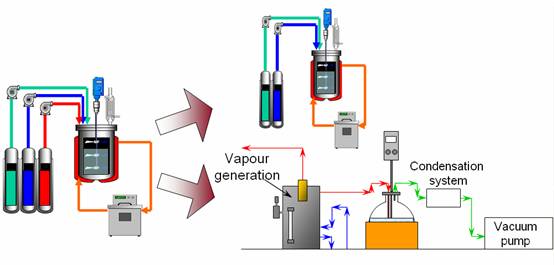Green/odorless latexes
It is a fact that latex production is more environmentally friendly than other polymerization methods as bulk or solution polymerization, but it is also a fact that because of governmental regulations and market preferences there is a strong pressure for VOC-free latexes. Emulsion polymerization rarely proceeds to completion and inevitably some amount of unreacted monomer remains in the latex. Monomer conversion in emulsion polymerization is usually higher than 90% and often over 99%, the amount of unreacted monomer being in the ppm range. In addition, latexes contained VOCs resulting from both raw material impurities and side reactions occurring during polymerization. Monomers and VOCs often have strong (and offensive) odors, which severely limit the range of applications of the latex. Research on both post-polymerization of the residual monomer and devolatilization (of both monomer and VOCs) is in progress. All acrylic, styrene acrylic and vinyl acrylic latexes are being considered. Future developments include strategies for the minimization of VOC formation during the polymerization.


